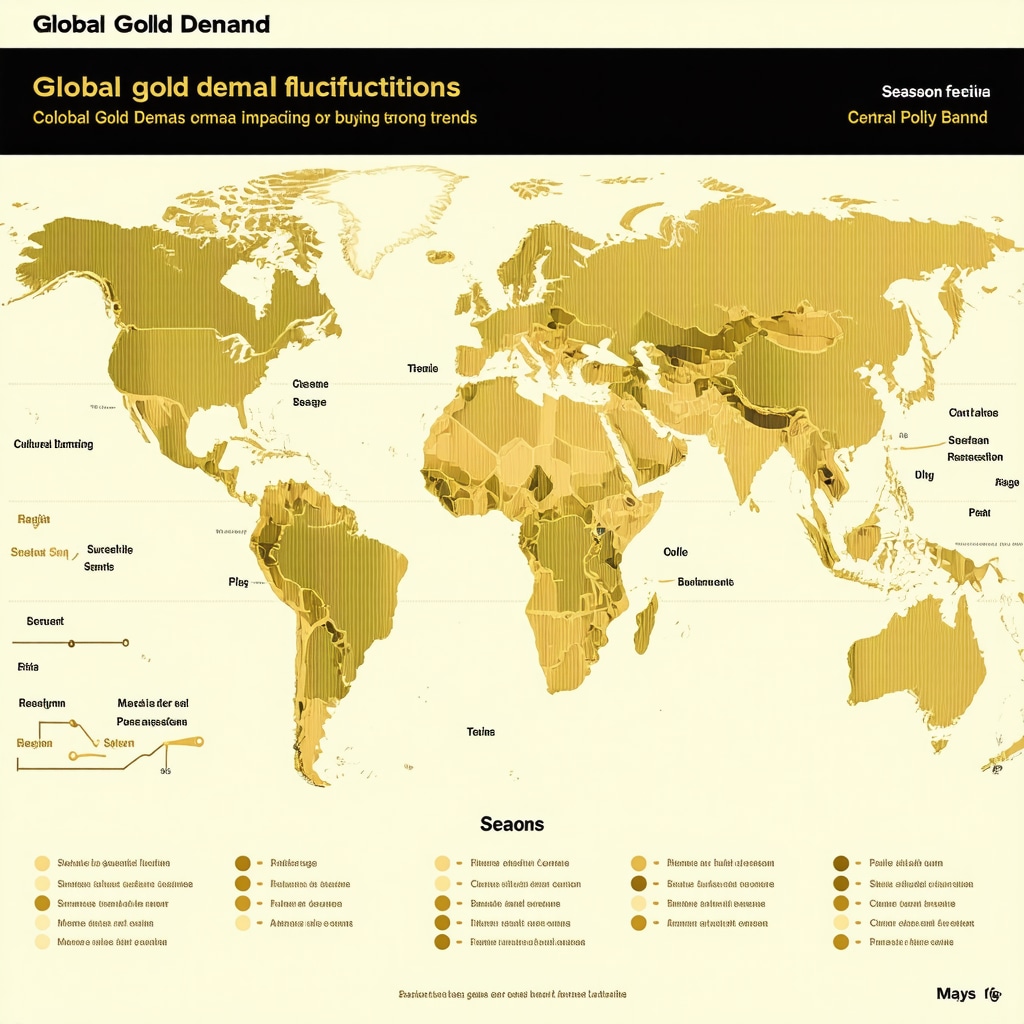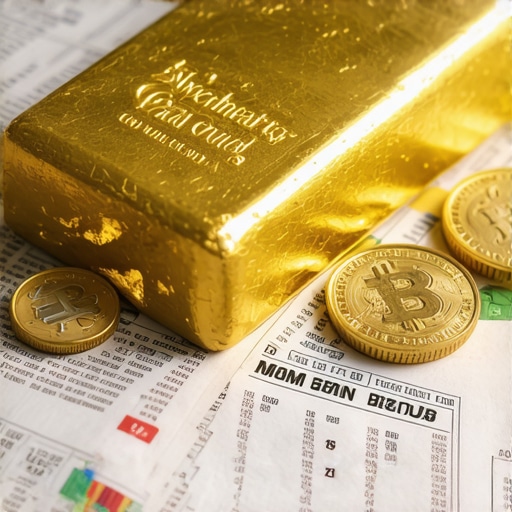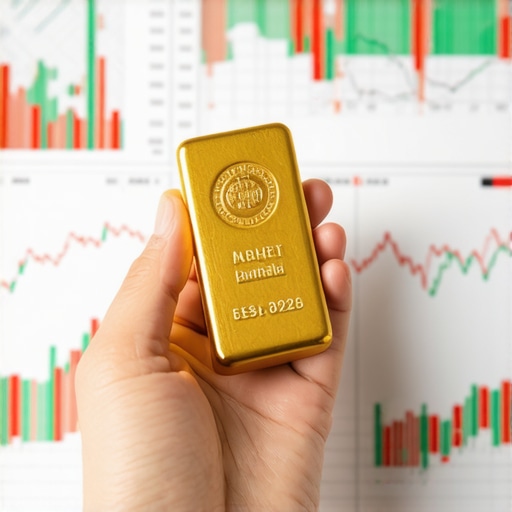When the Glitter Fades: A Cautionary Tale for New Gold Investors
Imagine this: you’ve just decided to add a dash of gold to your investment portfolio, lured by its timeless allure and reputation as a safe haven. You dive headfirst, dazzled by shiny coins and bars, only to realize you’ve made rookie mistakes that could tarnish your returns. Investing in gold for beginners may seem straightforward, but as with any glittering treasure, there are pitfalls lurking beneath the surface.
Shiny Lures and Hidden Traps: Common Gold Investment Blunders
One of the biggest slip-ups newcomers make is buying gold without understanding the different forms it takes. Physical gold bars and coins, gold ETFs, mutual funds, and mining stocks each come with unique risks and rewards. Jumping into physical gold without proper storage plans or ignoring market demand trends can turn your golden dream into a costly nightmare. For those intrigued by physical ownership, exploring top tips for secure ownership can be enlightening.
Is More Always Merrier? The Diversification Debate in Gold Investing
Beginners often ask: “Should I put all my eggs in one gold basket?” The answer leans heavily towards no. Diversification across gold ETFs, stocks, and physical assets can shield you from market volatility. But beware—spreading too thin without grasping each investment’s nuances can backfire. Curious about balancing your portfolio with gold? Check out our guide on choosing the right gold investment options.
Another frequent misstep is underestimating the influence of central bank gold purchases on market dynamics. These hefty transactions can sway prices unexpectedly, so keeping an eye on such global moves is wise. The insightful analysis at how central bank gold purchases affect market dynamics offers a seasoned viewpoint.
Gold Fever or Fool’s Gold? Spotting the Real Deal
Beware of counterfeit gold and unscrupulous dealers. Beginners might rush to buy from the first shiny seller they find, but trusting the wrong dealer can cost you dearly. Always research and opt for reputable sources; a savvy investor’s mantra is to verify before you buy. For expert guidance, see choosing trusted gold dealers.
Lastly, timing and patience are your allies. Gold prices fluctuate in response to economic trends, inflation fears, and geopolitical tensions. Rushing in during a price spike or panic-selling during a dip can erode your gains. As famed investor Warren Buffett once said, “The stock market is designed to transfer money from the active to the patient.” This wisdom resonates well in gold investing too (Investopedia on Warren Buffett’s investment philosophy).
Feeling ready to polish your gold investment skills? Share your thoughts or experiences in the comments below. And if you want to deepen your understanding of how global gold demand trends shape prices, explore this insightful piece.
Unlocking the Complexities of Gold Market Movements
While the allure of gold is undeniable, successful investing requires more than just enthusiasm. The gold market is influenced by a complex interplay of factors beyond the straightforward supply and demand. Global economic indicators, geopolitical tensions, and currency fluctuations all shape gold prices, demanding investors adopt a nuanced perspective. For instance, central banks’ strategic gold acquisitions can signal shifts in monetary policies, affecting market dynamics significantly. To dive deeper, consider reading how central banks shape gold market dynamics in 2025 for a comprehensive analysis.
How Can Beginners Navigate the Volatility Without Getting Burned?
Gold’s price volatility is often a double-edged sword. It offers opportunities for gains but also risks steep losses, especially for those new to the market. New investors should ask themselves: How can I leverage gold’s protective qualities without falling prey to impulsive decisions driven by short-term fluctuations? A disciplined approach, involving diversified gold-related assets and a long-term horizon, is crucial. Utilizing gold ETFs and mutual funds can provide liquidity and reduce risks tied to physical storage and authenticity, while physical gold offers tangible security. For detailed strategies, exploring effective gold investment strategies to maximize returns is recommended.
Moreover, understanding gold’s role as a hedge against inflation and economic uncertainty is essential. According to the World Gold Council, gold has historically preserved purchasing power across decades, especially during periods of currency devaluation and geopolitical crises (World Gold Council on gold as an inflation hedge).
Practical Tips for Building a Resilient Gold Portfolio
Building a resilient portfolio means balancing physical gold with financial instruments. Physical gold, such as bars and coins, provides a direct asset that cannot be hacked or erased digitally. However, it requires secure storage and insurance, costs that can erode returns if not managed properly. Alternatively, gold ETFs and mutual funds offer ease of trading and diversification but are subject to market risks and management fees. Understanding these trade-offs helps investors make informed choices aligned with their risk tolerance and investment goals.
Beginners should also stay vigilant about market timing and macroeconomic signals. For example, tracking inflation reports, currency strength, and central bank announcements can help anticipate price movements. Proactive investors might find value in gold price forecasts for 2025 to align their strategies with emerging trends.
Lastly, continuous education and engagement with the gold investing community can sharpen decision-making. Sharing experiences, questions, and insights through forums or comments fosters a deeper understanding and awareness of market nuances.
What gold investment challenges or successes have you encountered? Join the conversation by leaving a comment below, or share this article with fellow investors seeking to navigate the glittering yet complex world of gold investing.
Decoding Central Bank Maneuvers: Advanced Insights into Gold’s Strategic Role
Central banks around the world are not mere spectators in the gold market; they are powerful players whose strategic acquisitions and disposals can ripple through global financial systems. Unlike casual investors, central banks operate with long-term economic and geopolitical objectives, often using gold as a hedge against currency risks and as a tool to diversify foreign reserves.
Their buying patterns can signal shifts in confidence about the US dollar or emerging economic tensions. For instance, a surge in gold purchases by central banks typically reflects concerns over inflation or political instability — factors that savvy investors should monitor closely. Understanding these subtle signals requires one to analyze not just the volume of gold moved but the timing and geopolitical context underpinning these transactions.
Moreover, central banks’ gold leasing and swap operations add layers of complexity to price dynamics, occasionally creating temporary liquidity that can mask true market supply constraints. Investors who can decode these nuances position themselves to anticipate market movements before they fully materialize.
What Are the Sophisticated Indicators That Signal Central Bank Gold Market Influence?
Advanced investors utilize a combination of macroeconomic data, international reserve reports, and geopolitical developments to gauge central bank activity’s impact. The International Monetary Fund’s COFER (Currency Composition of Official Foreign Exchange Reserves) database is a prime resource for tracking official gold holdings over time. Additionally, monitoring statements from major central banks, such as the Federal Reserve, European Central Bank, and People’s Bank of China, can provide early clues about strategic shifts.
Further, analyzing derivatives markets and futures positioning offers insight into market expectations and speculative flows influenced indirectly by central bank maneuvers. For an in-depth guide, the World Gold Council’s Central Bank Gold Reserves Analysis 2025 offers detailed data and expert commentary.
Integrating Gold into Multi-Asset Portfolios: Beyond Traditional Diversification
While gold has historically been a cornerstone of diversification, the modern investor must approach it as part of an integrated asset allocation strategy that accounts for correlations with equities, bonds, and alternative assets in various market regimes. Gold’s low or negative correlation with traditional financial assets during periods of crisis makes it a potent tool for risk mitigation, but its role is evolving amid changing macroeconomic realities.
Contemporary portfolio theory emphasizes dynamic allocation, adjusting gold exposure based on market signals, volatility indices, and inflation expectations rather than static percentage targets. For instance, in inflationary environments with rising interest rates, gold’s performance can diverge from historical patterns, necessitating more nuanced tactical shifts.
Moreover, innovative financial products such as gold-linked structured notes and gold futures options provide sophisticated avenues for tailoring portfolio risk-return profiles. These instruments require expert knowledge but can amplify returns or hedge specific risks when used judiciously.
How Can Professional Investors Optimize Gold Exposure Amid Volatile Economic Cycles?
Experts recommend leveraging quantitative models incorporating macroeconomic indicators like the Consumer Price Index (CPI), real interest rates, and geopolitical risk metrics to determine optimal gold allocation in varying market conditions. This approach balances gold’s inflation-hedging qualities with its opportunity costs during bullish equity markets.
Furthermore, employing scenario analysis and stress testing can reveal how gold holdings might perform under adverse conditions, enabling proactive portfolio adjustments. This level of strategic planning often distinguishes seasoned investors from novices.
Emerging Trends: Digital Gold and Blockchain Innovations Reshaping Ownership
The digitization of gold ownership through blockchain and tokenization is revolutionizing access, liquidity, and transparency. Tokenized gold allows investors to own fractional shares of physical gold stored in secure vaults, with transactions recorded on immutable ledgers, reducing counterparty risk and increasing market accessibility.
These innovations democratize gold investment, enabling micro-investments and real-time trading without traditional intermediaries. However, they also introduce new regulatory and cybersecurity considerations that require investors to exercise due diligence.
As this paradigm evolves, understanding the technological infrastructure and legal frameworks governing digital gold assets becomes imperative for forward-thinking investors aiming to harness these opportunities effectively.
Are you ready to explore how blockchain technology is transforming gold investment? Dive deeper into the world of digital gold innovation and stay ahead in the evolving market landscape.
Decoding the Nuances of Global Gold Demand: What Investors Often Miss
While conventional wisdom holds that gold demand is primarily driven by jewelry and investment purchases, a deeper dive reveals a multifaceted landscape. Industrial applications, emerging market consumption patterns, and central bank reserve adjustments collectively orchestrate price movements. For instance, shifting consumer preferences in Asia—historically the largest gold jewelry market—can alter demand trajectories significantly. Investors keen to leverage these insights should explore understanding global gold demand trends for strategic investing, where nuanced analyses shed light on these evolving dynamics.
How Do Seasonal and Cultural Factors Influence Gold Market Cycles?
Seasonality remains a subtle yet potent force in gold price fluctuations. Festivals such as Diwali in India or the Lunar New Year in China trigger spikes in physical gold acquisitions, temporarily tightening supply and nudging prices upward. Conversely, post-festival periods often see a softening demand. Savvy investors who time their market entries and exits around these cycles can optimize returns, especially in physical gold holdings. Recognizing these patterns complements broader macroeconomic strategies and is essential for those invested in physical gold investment best practices.
Evaluating the Impact of Central Bank Policies Beyond Gold Purchases
Beyond direct gold acquisitions, central banks influence the gold market through monetary policies that affect inflation expectations and currency valuations. Quantitative easing programs, interest rate adjustments, and reserve diversification strategies indirectly shape gold’s attractiveness. For example, dovish policies often spur gold demand as investors seek inflation hedges, while tightening cycles may dampen enthusiasm. Comprehensive insights can be found at how central banks shape gold market dynamics in 2025, a resource that expertly bridges policy actions with market responses.
What Advanced Analytical Tools Can Investors Use to Anticipate Gold Price Movements?
Modern gold investors increasingly rely on sophisticated analytical frameworks combining technical analysis, macroeconomic modeling, and geopolitical risk assessment. Sentiment indicators, moving averages, and derivatives market positioning provide actionable signals. Additionally, artificial intelligence and machine learning models are gaining traction for identifying complex patterns invisible to traditional methods. Incorporating these tools requires a steep learning curve but can substantially enhance timing and allocation decisions. Those interested in elevating their trading acumen might consider effective gold trading techniques to maximize your gains for expert guidance.
According to a recent report by the World Gold Council, integrating these multifaceted data streams can improve forecast accuracy by up to 25%, underscoring the value of a holistic approach (World Gold Council Market Insights 2024).
Engage with the Gold Investing Community: Share Your Unique Perspectives
Gold investing remains as much an art as a science, shaped by individual strategies and evolving market forces. We invite seasoned investors and newcomers alike to share their experiences, challenges, and novel approaches in the comments below. Your insights can illuminate the path for others and foster a vibrant, informed community. For those eager to deepen their understanding, exploring global demand trends offers a powerful foundation.

Expert Insights & Advanced Considerations
Decoding Central Bank Influence Beyond the Headlines
Central banks act with strategic intent that transcends mere gold accumulation. Their gold reserve maneuvers often signal broader monetary policy shifts and geopolitical recalibrations. Recognizing these signals demands a holistic view, integrating economic indicators and geopolitical context — an approach crucial for anticipating market inflections effectively. For further exploration, see how central banks shape gold market dynamics.
Dynamic Allocation: Gold’s Role in Contemporary Multi-Asset Portfolios
In today’s complex market environment, static gold allocations are insufficient. Expert investors apply adaptive strategies that modulate gold exposure based on inflation expectations, interest rate trajectories, and volatility indices. This tactical flexibility enhances risk-adjusted returns, integrating gold not just as a hedge but as a dynamic portfolio component. Resources like building a gold ETF portfolio provide practical frameworks.
Emerging Technologies: Blockchain’s Disruption of Gold Ownership
The tokenization of gold via blockchain platforms is revolutionizing accessibility, liquidity, and transparency in gold investing. Fractional ownership backed by physical bullion stored securely enables micro-investments and real-time trading, shifting paradigms for both retail and institutional investors. Navigating regulatory and cybersecurity concerns is essential to capitalize on these innovations fully.
Advanced Analytical Tools for Anticipating Gold Price Movements
Integrating technical analysis with macroeconomic modeling and geopolitical risk assessment empowers investors to decode complex price drivers. Sentiment indicators, derivatives positioning, and emerging AI-driven models refine timing and allocation decisions. For actionable techniques, explore effective gold trading techniques tailored for 2025’s volatility.
Curated Expert Resources
World Gold Council’s Central Bank Gold Reserves Analysis 2025: Offers comprehensive data and expert commentary on central bank gold holdings and their market implications, essential for understanding strategic reserve shifts.
Gold Price Forecast 2025 – Key Factors Influencing Future Trends: Provides nuanced insights into macroeconomic and geopolitical drivers shaping gold’s trajectory, aiding in informed portfolio planning.
Understanding Global Gold Demand Trends for Strategic Investing: Delivers in-depth analyses of consumption patterns, industrial uses, and seasonal influences, enriching demand-side perspectives.
Effective Gold Trading Techniques to Maximize Your Gains: A practical guide combining technical and fundamental strategies to navigate market fluctuations effectively.
Physical Gold Investment Top Tips for Secure Ownership: Focuses on best practices for safely acquiring, storing, and insuring physical gold, crucial for mitigating risks inherent in tangible assets.
Final Expert Perspective
Gold investing in 2025 demands a blend of strategic foresight, adaptive portfolio management, and technological savvy. Understanding the profound impact of central bank policies, integrating gold thoughtfully within multi-asset portfolios, and embracing innovations like digital gold tokenization distinguish the informed investor. Moreover, mastery of advanced analytical tools sharpens market timing and risk mitigation. Armed with these insights, investors can navigate gold’s complexities with confidence and precision.
For those committed to elevating their gold investment acumen, engaging with expert resources and participating in the community discussion fosters continuous growth. Share your perspectives or delve into strategic analyses such as global gold demand trends to stay at the forefront of this ever-evolving market.










